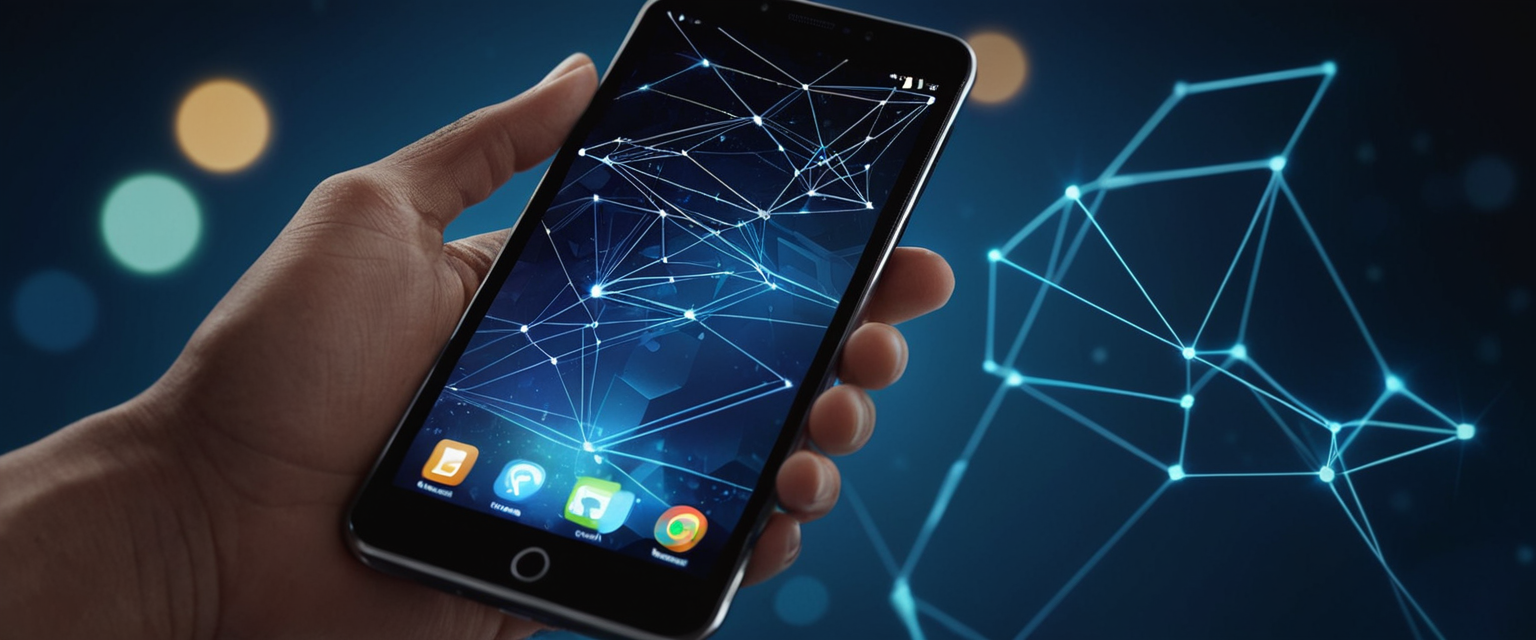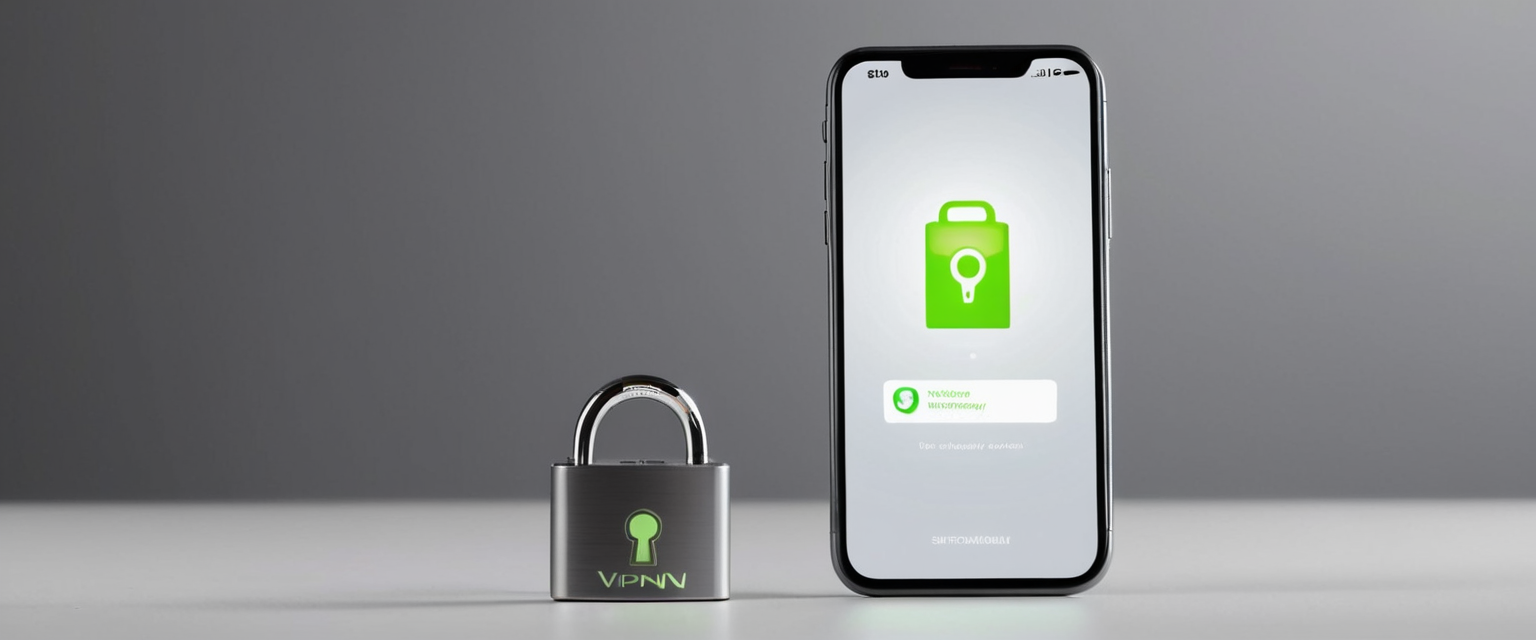
A Virtual Private Network (VPN) on iPhones provides essential protection by cloaking your IP address, location, device identifiers, and online activity through internet traffic encryption. The process of obtaining and setting up a VPN on iPhone involves multiple pathways, each with distinct advantages and technical requirements, ranging from simple app-based installation to manual configuration through the device’s native settings interface. This report examines the complete landscape of acquiring, configuring, and optimizing VPN functionality on Apple’s iPhone ecosystem, encompassing setup methodologies, available services, technical protocols, advanced features, and practical considerations for users seeking enhanced privacy and security.
Understanding VPNs on iPhone: Fundamentals and Purpose
A virtual private network operates as a foundational privacy tool by establishing a secure encrypted connection between a user’s device and a remote VPN server located in another geographic region. The fundamental mechanism involves the VPN provider offering hundreds of potential servers distributed globally, with the VPN connecting the user’s iPhone to one of these servers through a secure encrypted connection. This encrypted tunnel scrambles data traffic, rendering it indecipherable to internet service providers and network administrators who might otherwise observe browsing behavior.
The operational flow of VPN technology on iPhone involves several sequential steps that collectively protect user privacy and security. When a user establishes a VPN connection, their data travels from the iPhone device through the encrypted tunnel to the remote VPN servers, where it gets decrypted before being transmitted to the destination website or service. The website ultimately receives the data in its unencrypted form, but critically, it appears to originate from the VPN server’s location rather than from the user’s actual physical location. This geographic masking, combined with IP address substitution and encryption, prevents hackers and malicious actors from establishing a direct connection between observed network traffic and the user’s actual identity or real IP address.
The importance of VPN protection becomes particularly acute when users connect to public Wi-Fi networks, such as those at coffee shops, airports, or hotels. In these unsecured environments, hackers can monitor network traffic, observe users shopping online or accessing banking services, and potentially initiate identity theft attacks targeting vulnerable unencrypted communications. Beyond security concerns, VPNs also enable users to bypass internet censorship, access geo-restricted content, and maintain control over personal data during browsing and banking activities.
However, users should understand that while VPNs provide substantial privacy enhancements, they do not render users completely anonymous. A reliable VPN merely masks the connection between a user’s device and the websites they visit, preventing ISPs and network administrators from observing browsing behavior while simultaneously concealing the user’s real IP address from destination websites. The encryption and privacy protections afforded by VPNs require selecting trustworthy providers with demonstrated commitment to user privacy and security standards.
Methods for Setting Up VPN on iPhone: The Two Primary Pathways
iPhone users have access to two distinct methodologies for establishing VPN connectivity on their devices, each with specific requirements, advantages, and operational characteristics. The first pathway involves downloading and installing a dedicated VPN application from Apple’s App Store, which automates most configuration tasks and provides user-friendly interfaces for server selection and connection management. The second pathway requires manual configuration through the iPhone’s native Settings application, accessed through the VPN and Device Management section, and demands that users possess specific technical information from their VPN provider.
Method One: VPN App Installation from the App Store
The app-based approach represents the recommended and most accessible pathway for most iPhone users seeking to establish VPN connections. This methodology begins by ensuring that the device operates the latest available iOS version, as current software provides optimal compatibility and security features for VPN functionality. Users can verify their iOS version by navigating to the Settings application, selecting General, and then tapping About to display the current operating system version.
After confirming iOS is current, users proceed to the App Store and search for their preferred VPN provider among the numerous options available. The App Store contains dozens of VPN applications, ranging from established commercial providers offering premium subscriptions to free alternatives with varying data limits and feature sets. Upon identifying a suitable VPN app, users tap the “Install” button, after which the application downloads and installs automatically to the iPhone.
Once the VPN application completes installation, users launch the app and follow on-screen prompts to create an account or log in with existing credentials. During the first connection attempt, the VPN app requests permission to add VPN configurations to the iPhone’s system settings, a necessary step that requires explicit user authorization. The app displays a permission dialog asking whether the user wishes to allow VPN configuration, to which users respond by tapping “Allow”. In some instances, the iPhone requests the device passcode, Face ID authentication, or fingerprint verification to confirm authorization for installing the VPN profile.
Following successful permission granting, users can select a VPN server location from those available within the application. Best practices suggest selecting a server geographically closest to the user’s actual location to optimize connection speed and minimize latency, though users may select alternative geographic locations based on specific needs such as accessing geo-restricted content. Once a server is selected, users tap the “Connect” button or similar control to initiate the VPN connection.
Upon successful connection establishment, the iPhone displays a VPN icon in the status bar, typically appearing as a small rectangular indicator containing the letters “VPN”. This visual confirmation indicates that the device is actively utilizing the VPN tunnel for internet traffic encryption and routing. The VPN remains active automatically unless the user manually disconnects from the server, closes the VPN application, or uninstalls the app entirely. Users should remain mindful that keeping the VPN active continuously may impact battery life and data consumption, particularly on devices with limited data plans, necessitating occasional disconnection during periods of inactivity.
Method Two: Manual VPN Configuration Through iOS Settings
For users who maintain their own VPN servers or require connection to organizational VPN infrastructure, manual configuration through the iPhone’s Settings application provides necessary flexibility. This advanced methodology requires that users possess specific technical information from their VPN provider or organization’s IT department, including the VPN server address, remote ID, authentication credentials, and the specific protocol utilized.
The manual configuration process begins by accessing the iPhone’s Settings application and navigating to General settings. From the General menu, users scroll down to locate the VPN and Device Management section, which consolidates VPN configuration options and device enrollment settings. Within this section, users select the VPN option and choose to “Add VPN Configuration”.
Upon initiating VPN configuration addition, users must select the VPN protocol type that matches their provider’s infrastructure. Apple’s iOS ecosystem supports multiple protocols including IKEv2 (Internet Key Exchange, version 2), IPsec (Internet Protocol Security), and L2TP (Layer 2 Tunneling Protocol). Modern VPN deployments increasingly utilize IKEv2/IPsec, which represents a contemporary, fast, and highly secure protocol particularly well-suited for mobile devices because it efficiently handles network transitions when users switch between Wi-Fi and cellular connectivity. L2TP/IPsec remains available as a more established alternative, though it generally operates with slower performance characteristics than IKEv2.
After protocol selection, users enter the required configuration details provided by their VPN service or organization. These details typically include a Description field (for user reference), the Server address (the VPN server’s IP address or domain name), the Remote ID (which verifies the VPN server’s identity), and User Authentication credentials consisting of username and password. Some VPN configurations may also require proxy server settings, which users can configure as either Manual (with specific proxy credentials) or Auto (with a proxy configuration URL), though most configurations leave proxy settings disabled unless explicitly required.
Upon completing the required configuration fields and tapping “Done,” the VPN profile installs to the device and becomes available in the VPN settings menu. Users can subsequently connect to this manually configured VPN by returning to Settings, navigating to VPN and Device Management, selecting VPN, and toggling the connection switch on. Unlike app-based VPN implementations, manually configured VPNs require users to repeat this selection process each time they wish to connect to a different server or modify VPN settings, as these configurations lack the dynamic server selection capabilities present in dedicated VPN applications.
Leading VPN Providers for iPhone: Popular Services and Offerings
The iPhone VPN market encompasses numerous established providers offering varying combinations of features, pricing structures, server networks, and security protocols. Leading providers have differentiated themselves through extensive server networks, advanced security features, streaming service compatibility, and strong privacy policies, with several achieving independent verification of their no-logging commitments through third-party audits.
NordVPN: Comprehensive Feature Set and Value Proposition
NordVPN has emerged as one of the most highly recommended VPN services for iPhone users, combining an extensive global server network, competitive pricing, and comprehensive security features that consistently receive high user ratings and positive reviews. The service operates over 7,400 servers distributed across 118 different countries, providing users with tremendous geographic flexibility for server selection. Despite this expansive server infrastructure, NordVPN maintains consistently high performance scores in independent speed tests, enabling seamless app usage and content streaming without noticeable performance degradation.
NordVPN’s commitment to user privacy is reinforced through its Panama-based jurisdiction, which provides legal protections against mandatory user data retention requirements that characterize many other countries. This geographic advantage positions the service outside the “14 Eyes” surveillance alliance, consisting of fourteen governments known to cooperate in intelligence gathering and citizen surveillance activities. The provider maintains a strict no-logging policy that has received verification through multiple independent third-party audits, confirming the company’s commitment to not recording user browsing history or connection metadata.
From a technical standpoint, NordVPN’s iOS application implements multiple VPN protocols including NordLynx (NordVPN’s proprietary protocol based on WireGuard), IKEv2/IPsec, and OpenVPN, with users able to select protocols based on their specific security and performance requirements. The service includes military-grade 256-bit AES encryption across all connections, a built-in kill switch that immediately disconnects internet traffic if the VPN connection drops unexpectedly, and DNS leak protection that prevents unauthorized disclosure of browsing activity through DNS query exposure. The iPhone app allows simultaneous connections across up to ten devices, enabling comprehensive protection across a user’s entire device ecosystem including routers, gaming consoles, and computers.
Regarding pricing, NordVPN offers four subscription tiers providing identical features with pricing varying based on subscription duration. Monthly subscriptions cost $11.99 per month, while committing to a two-year subscription reduces the monthly cost to approximately $2.99 when divided across the subscription period, representing significant savings for long-term users. All NordVPN subscription plans include a thirty-day money-back guarantee, enabling users to trial the service risk-free before committing to continued use.
Surfshark: Budget-Friendly Alternative with Comprehensive Features
Surfshark has disrupted the VPN market through an exceptionally aggressive pricing strategy that provides powerful features at dramatically reduced costs compared to premium competitors. If users commit to a two-year subscription, the monthly cost drops to merely $1.99, representing approximately 83% of savings compared to month-to-month pricing and positioning Surfshark as one of the most affordable options among high-quality VPN providers. The service provides access to over 3,200 servers distributed across approximately 100 countries, which although smaller than some competitors, provides adequate geographic coverage for the vast majority of users’ requirements.
Surfshark’s iOS application implements WireGuard, IKEv2/IPsec, and OpenVPN protocols, with 10 Gbps servers delivering excellent speed performance suitable for streaming and downloading activities. The service distinguishes itself through unlimited simultaneous device connections, enabling users to protect their entire device ecosystem under a single subscription without device limits. Surfshark includes CleanWeb, an advertisement and tracker blocking feature that enhances browsing experience by eliminating unwanted advertisements and reducing tracking by third-party analytics platforms. The service also offers Dynamic MultiHop functionality, which routes user traffic through two separate VPN servers for enhanced privacy, creating a scenario where even if one server becomes compromised, user identity remains protected.
Surfshark maintains headquarters in the Netherlands, which operates within the Nine Eyes surveillance alliance but provides legal protections through comprehensive data retention limitations and privacy-focused regulatory frameworks. The provider has undergone third-party audits confirming its strict no-logs policy, assuring users that browsing activity remains unrecorded and unmonitored.
ExpressVPN: Premium Performance and Global Reach
ExpressVPN positions itself as a premium VPN service offering exceptional speeds, stability, extensive streaming support, and advanced security features that justify its higher price point compared to budget alternatives. The service maintains technical infrastructure spanning 94 countries, providing extensive geographic coverage and flexibility for users requiring access to region-specific content or services. ExpressVPN’s server network consistently achieves speeds exceeding 100 Mbps in independent testing, enabling seamless streaming, downloading, and browsing without perceivable performance impact.
From a security perspective, ExpressVPN implements multiple protocols including IKEv2, OpenVPN, and L2TP/IPsec, along with military-grade 256-bit AES encryption providing robust data protection. The service operates its own encrypted DNS servers, actively preventing DNS leaks through strong security protocols built into all applications. ExpressVPN has undergone rigorous third-party security audits confirming its no-logs policy, with the service demonstrating this commitment through real-world verification in court cases where authorities attempted to access user information.
Protect Your Digital Life with Activate Security
Get 14 powerful security tools in one comprehensive suite. VPN, antivirus, password manager, dark web monitoring, and more.
Get Protected NowPricing for ExpressVPN begins at $12.95 per month for month-to-month subscriptions, with longer-term commitments reducing the effective monthly cost to approximately $6.67 when divided across fifteen months of service. All subscription plans include a thirty-day money-back guarantee.
ProtonVPN: Privacy-First Philosophy with Free Option
ProtonVPN distinguishes itself through a privacy-first philosophy and unique positioning of offering a legitimate free tier alongside premium paid services. The free version provides access to three countries with unlimited data bandwidth, enabling users to experience VPN functionality without financial commitment while maintaining strong privacy protections. Users requiring additional countries or advanced features can upgrade to paid tiers offering access to a broader server network.
ProtonVPN operates under Swiss jurisdiction, benefiting from stringent privacy laws that prohibit mandatory user data retention and provide legal protections against surveillance demands. The service runs its own DNS servers and implements DNS leak protection alongside comprehensive security features. The provider has undergone independent audits confirming its no-logs policy, with verification statements demonstrating the company’s commitment to not recording user activity or connection metadata.
VPN Protocols and Technical Infrastructure: Understanding the Technology
The technical foundation enabling iPhone VPN functionality rests upon standardized protocols that manage encryption, authentication, and data transmission through secure tunnels. iOS devices support multiple protocols, each offering distinct advantages regarding speed, security, compatibility, and behavior in mobile environments where users frequently transition between Wi-Fi and cellular connectivity.
IKEv2/IPsec: Modern Protocol for Mobile Devices
IKEv2 (Internet Key Exchange, version 2) combined with IPsec represents the contemporary standard for VPN implementations on mobile platforms, offering optimal balance between security, speed, and mobile suitability. This protocol supports both IPv4 and IPv6 connectivity, enabling compatibility across diverse network infrastructures. Authentication options within IKEv2/IPsec deployments include shared secrets, RSA certificates, ECDSA certificates, EAP-MSCHAPv2, and EAP-TLS, providing flexible security configurations suited to various organizational and individual requirements.
The primary advantage of IKEv2 for mobile iPhone users lies in its capability to seamlessly handle network transitions when devices switch between Wi-Fi and cellular connectivity. When an iPhone user moves between network types, IKEv2 automatically re-establishes the VPN connection with minimal interruption through MOBIKE (Mobility and Multihoming Protocol), eliminating connection drops that plague older protocols. This mobility support proves particularly valuable for users who frequently travel or move between locations while maintaining active internet connections.
IKEv2 deployments also support Suite B cryptography standards including ECDSA certificates, ESP encryption with GCM (Galois/Counter Mode), and ECP Groups for Diffie-Hellman key exchange, providing modern cryptographic protections that exceed legacy protocol capabilities. Split tunneling functionality, supported through IKEv2 configuration options, enables selective routing of specific traffic through the VPN while permitting other traffic to flow directly to its destination, optimizing performance for applications requiring local network access while protecting sensitive traffic.

L2TP/IPsec: Established Alternative Protocol
Layer 2 Tunneling Protocol (L2TP) combined with IPsec represents an older but widely supported protocol that remains available on iOS devices for organizations and services that have not transitioned to newer IKEv2 implementations. L2TP/IPsec supports user authentication through MS-CHAPv2 passwords and machine authentication through shared secrets, enabling diverse security configurations. However, L2TP generally demonstrates slower performance characteristics compared to IKEv2, making it less optimal for bandwidth-intensive activities like streaming or gaming.
On macOS systems specifically, L2TP/IPsec can incorporate Kerberos authentication mechanisms for machine-level authentication, though this advanced capability remains unavailable on iOS devices. Despite its technical maturity and widespread organizational support, L2TP increasingly functions as a fallback option for situations where IKEv2 infrastructure is unavailable.
Advanced Protocols: OpenVPN and WireGuard
OpenVPN and WireGuard represent additional VPN protocols that have gained significant adoption within the industry, though neither protocol receives native built-in support from iOS. OpenVPN has established itself as the gold standard for security and configuration flexibility, offering extensive customization options and standing as one of the most audited and trusted protocols in the security industry. However, OpenVPN’s comprehensive feature set and configurability requirements translate to greater complexity and reduced performance compared to purpose-built modern protocols.
WireGuard, a relatively newer protocol created specifically for modern environments, has gained prominence for its exceptional speed combined with modern cryptography implementation. WireGuard’s codebase represents a fraction of OpenVPN’s size, simplifying security auditing and vulnerability identification while delivering connection speeds potentially double or triple those of OpenVPN implementations. However, WireGuard’s minimal configuration flexibility creates challenges for privacy implementation, as the protocol’s design philosophy eliminates some of the extensive privacy controls available through OpenVPN.
To utilize OpenVPN or WireGuard on iPhones, users must install dedicated third-party VPN applications that implement these protocols through the Network Extension framework rather than relying on built-in iOS VPN configuration options. Providers like NordVPN have developed proprietary implementations such as NordLynx, which builds upon WireGuard while adding privacy enhancements absent from the original protocol specification.
Advanced VPN Features and Deployment Options: Beyond Basic Connectivity
Apple’s iOS platform supports sophisticated VPN deployment models extending beyond simple user-initiated connections, providing organizational and advanced individual implementations that enable granular traffic management, conditional activation, and per-application routing.
VPN On Demand: Automatic Conditional Activation
VPN On Demand functionality enables iPhones to automatically establish VPN connections based on predefined network conditions and domain-based triggers, eliminating the requirement for users to manually initiate connections. This feature operates in two sequential stages: the network detection stage defines VPN requirements applied when a device’s primary network connection changes, while the connection evaluation stage specifies VPN requirements triggered by domain name connection requests on an as-needed basis.
VPN On Demand rules can implement sophisticated logic such as automatically connecting to the VPN when the device connects to an internal corporate network becomes unnecessary, or conversely, automatically activating the VPN when connection to unknown public Wi-Fi networks is detected. Organizations can configure VPN On Demand to automatically establish VPN connections when DNS requests for specified domain names fail, ensuring that employees can seamlessly access internal resources even when DNS resolution temporarily fails. This advanced feature requires certificate-based authentication rather than user interaction, ensuring reliable automatic activation without necessitating user intervention for credential entry.
Per-App VPN: Granular Application-Level Traffic Control
Per-app VPN functionality provides exceptionally granular control over VPN routing by allowing separate VPN connections for individual managed applications, enabling organizations to segregate corporate and personal data traffic at the application level. This capability permits organizations to route sensitive business applications through one VPN connection while excluding personal applications from VPN tunneling, effectively preserving user privacy for personal device activities while ensuring corporate data security.
Organizations can implement per-app VPN routing through mobile device management (MDM) solutions that specify distinct VPN connections for different managed applications and specific domains accessed through the Safari browser. This separation ensures that sensitive organizational data consistently travels through protected corporate network infrastructure while personal data remains subject to the user’s own privacy preferences. Per-app VPN functionality requires device management infrastructure to implement, making it primarily available within organizational deployment contexts rather than for individual consumer use.
Always On VPN: Continuous Protection for Managed Devices
Always On VPN represents the most comprehensive protection model, available exclusively for iOS devices managed through mobile device management solutions and supervised using Apple Configurator, Apple School Manager, or Apple Business Manager. This deployment mode eliminates the need for users to manually activate VPN protection, instead automatically enabling VPN encryption for all cellular and Wi-Fi network traffic from connection initialization onward.
Always On VPN functionality grants organizations complete control over device traffic by tunneling all IP traffic back to the organization’s network infrastructure, enabling comprehensive traffic monitoring, filtering, and access restriction. The organizational device management infrastructure can monitor and filter all traffic flowing to and from devices, secure data within the corporate network, and restrict device access to the internet through specific approved channels. This comprehensive protection model ensures that users cannot circumvent organizational security policies by manually disabling VPN connectivity, making it ideal for highly sensitive environments requiring absolute control over data transmission.
Connection Management and User Control: Operating VPN on iPhone
Establishing and Monitoring VPN Connections
Once users complete VPN setup through either app-based or manual configuration methodologies, establishing active VPN connections follows straightforward procedures that require minimal technical knowledge. For users employing dedicated VPN applications, initiating connections typically requires launching the app and tapping a connection button prominently displayed on the application interface. Most modern VPN apps automatically recommend optimal server locations based on factors including geographic proximity, server load, and network conditions, enabling one-tap connection without requiring manual server selection.
Upon successful connection establishment, users observe visual confirmation through the VPN icon appearing in the iPhone status bar, typically displayed as a small rectangular indicator containing “VPN” text or equivalent symbolic representation. This icon persists in the status bar continuously while the VPN remains active, providing constant awareness of protected connection status. The iPhone also enables users to verify VPN connection status through the Control Center by swiping down from the top-right corner of the screen, where a VPN connectivity control displays the current connection state and allows quick disconnection if needed.
For users employing manually configured VPN connections through Settings, establishing VPN connectivity requires navigating back to Settings, accessing General settings, selecting VPN and Device Management, choosing VPN, and toggling the connection switch to activate the tunnel. While this process requires more steps than app-based approaches, it provides identical functionality and security protections once the connection activates.
Disconnecting and Managing VPN Sessions
Users can disconnect from active VPN connections through multiple pathways depending on whether they utilized app-based or manual configuration approaches. VPN app users can tap a disconnect button within the application interface, or alternatively access the Control Center, locate the VPN connectivity control, and tap it to disconnect. For manually configured VPN connections, users return to Settings, navigate to VPN and Device Management, select VPN, and toggle the connection switch off to disable the tunnel.
The iPhone includes a “Connect On Demand” setting within VPN configuration profiles that automatically re-establishes VPN connections after manual disconnection, which some users find helpful for uninterrupted protection while others consider intrusive. Users experiencing automatic reconnection after deliberately disconnecting can disable this feature by accessing the VPN profile settings, tapping the information icon adjacent to the VPN name, and toggling off the “Connect On Demand” setting.
Removing VPN Configurations and Applications
Users who wish to completely remove VPN configurations from their devices can access Settings, navigate to General, select VPN and Device Management, choose VPN, tap the information icon adjacent to the profile name, and select “Delete VPN” from the options menu. Confirming the deletion removes the VPN profile entirely, eliminating any ability to quickly reconnect without reconfiguring the VPN connection from scratch.
For users employing third-party VPN applications who decide to discontinue service, uninstalling the app through standard iOS app removal procedures (long-pressing the app icon and selecting “Remove App” or using Settings > General > iPhone Storage) removes both the application and its associated VPN configuration profiles.
Performance, Battery, and Data Considerations: Practical Implications

VPN’s Impact on Battery Life
VPN usage presents a recognized trade-off regarding battery consumption, as the encryption and decryption processes required for secure data transmission demand additional processing power from the iPhone’s processor. Studies measuring this impact have found that VPNs typically increase iPhone battery consumption by approximately 5-15% per day under standard usage conditions, though this impact varies significantly based on the protocol utilized, connection frequency, and individual usage patterns.
The choice of VPN protocol substantially influences battery drain characteristics, with modern lightweight protocols like WireGuard demonstrating markedly lower battery impact compared to more computationally intensive protocols. Testing conducted on an iPhone 13 Pro Max with the WireGuard protocol showed battery drain reduction to approximately 3-8% daily, compared to 11% drain observed with older protocols, representing a substantial efficiency gain. The distance between the user and the selected VPN server additionally affects battery consumption, as devices must work harder to maintain stable connections to geographically distant servers, necessitating increased processor utilization and power consumption.
Users concerned about battery impact can implement several optimization strategies to minimize drain without sacrificing security. Selecting VPN servers geographically closest to the user’s physical location reduces latency and processor burden, thereby decreasing battery consumption. Choosing energy-efficient protocols like WireGuard or IKEv2/IPsec over more resource-intensive protocols substantially reduces battery impact. Users can also disable the VPN during periods of minimal activity or when specific applications don’t require encryption, such as when browsing low-sensitivity content on trusted networks, enabling more targeted protection strategies that balance security with battery longevity.
Data Usage and Network Performance
VPN implementation introduces minor data overhead as encryption adds supplementary information to packets transmitted through the tunnel, increasing the total data volume compared to unencrypted connections. WireGuard protocol implementations add approximately 4% additional data overhead compared to unencrypted connections, while OpenVPN implementations can introduce overhead up to 20% depending on configuration parameters. This data overhead remains negligible for most users, representing minimal additional cost even for those maintaining limited data plans, though users should remain mindful of this factor when approaching data limit thresholds.
VPN’s impact on connection speed depends heavily on protocol selection and server proximity. WireGuard has demonstrated speeds up to 75% faster than OpenVPN in independent testing, with differences becoming even more pronounced on shorter-distance connections where WireGuard achieved speeds nearly triple those of OpenVPN. Connection establishment speed also varies significantly, with OpenVPN requiring up to 8 seconds to initiate connections while WireGuard establishes connections in approximately 100 milliseconds, providing superior experience for users frequently switching networks.
Troubleshooting Common VPN Issues: Diagnosis and Resolution
VPN Connection Failures and Server Unavailability
Users encountering VPN connection failures should begin troubleshooting by verifying internet connectivity exists independent of the VPN, as connection failures often result from underlying internet access problems rather than VPN-specific issues. Testing this involves disabling the VPN and attempting to browse websites or access services without protection; if websites fail to load at normal speeds or not at all, the issue likely stems from network connectivity rather than VPN malfunction.
Common VPN error codes such as Error 619, 720, and 800 indicate specific connection problems with corresponding solutions. Error 619 typically indicates connection failure before the secure tunnel fully establishes, often resulting from firewall interference, antivirus software blocking VPN traffic, or unstable internet connections. Resolving Error 619 involves restarting the router or modem, temporarily disabling third-party firewalls and antivirus tools, and attempting reconnection. Switching VPN protocols, particularly to obfuscated or alternative protocols, can also circumvent restrictions causing Error 619.
VPN server unavailability frequently causes connection issues, as providers periodically take servers offline for maintenance or due to technical failures. Users encountering persistent connection problems should verify server status through their VPN provider’s status page or support channels, and attempt connecting to alternative servers as a temporary solution.
VPN Configuration and Permission Errors
On iOS devices, users occasionally encounter error messages stating “The VPN Configuration Could Not Be Installed,” which typically indicates that the iPhone declined VPN configuration installation permission. Resolving this issue requires navigating to Settings, accessing General, selecting VPN and Device Management, and explicitly authorizing the VPN app to manage VPN profiles. After granting permission, users should reinstall the VPN app to ensure all configurations apply correctly.
Persistent Disconnection and Reconnection Issues
Some VPN connections exhibit behavior where the tunnel persistently disconnects and rapidly reconnects, preventing users from maintaining stable protected connections. Disconnection behavior often stems from weak or fluctuating mobile signals causing network instability, firewall or security software interference, or incorrect configuration settings.
Users experiencing persistent disconnections should ensure their VPN app has permissions to operate in the background, as battery optimization features on iOS can restrict background activity for battery-draining applications like VPNs. Additionally, enabling “Always On” or “Auto Connect” features within VPN app settings can help minimize disconnection frequency by automatically reestablishing connections when they unexpectedly drop.
If VPN connections specifically disconnect when the iPhone enters sleep mode or becomes idle, this often results from iOS automatically terminating background network activity, a behavior particularly common with L2TP protocol implementations. Switching to IKEv2 protocol or enabling specific app features designed to maintain connections through sleep cycles can mitigate this issue.
DNS Leaks and Security Verification
DNS leaks represent a subtle but serious security vulnerability where devices inadvertently send DNS queries outside the VPN tunnel despite the VPN being active, potentially exposing browsing history to ISPs or network administrators. Users should periodically test for DNS leaks using online testing tools available through various security websites that verify whether DNS queries are properly routed through the VPN or leaking to unencrypted channels.
Prevention requires selecting VPN providers that implement robust DNS leak protection through techniques such as operating their own encrypted DNS servers and implementing firewall rules preventing queries from routing outside the VPN tunnel. Users can further mitigate leak risks by disabling IPv6 on their devices, as many VPNs don’t fully protect IPv6 traffic, and ensuring their VPN app’s DNS leak protection remains enabled through the settings interface.
Privacy, Security, and Trust: Evaluating VPN Providers
No-Logs Policies and Third-Party Verification
The concept of “no-logs” policies represents a cornerstone privacy protection mechanism, though genuine no-logs implementations require careful provider selection and verification. True no-logs VPNs decline to record activity logs documenting user online activities, connection logs storing connection timestamps and data transferred amounts, or aggregated logs tracking usage patterns. However, even legitimately no-logs providers necessarily maintain billing information and account details required to provide service, meaning “no-logs” specifically refers to activity and connection metadata rather than absolute absence of any recorded data.
Numerous leading VPN providers have undergone independent third-party audits verifying their no-logs claims, with audit results confirming these providers genuinely refrain from recording user activity. NordVPN has achieved verification through multiple independent audits confirming its no-logs policy, Surfshark has undergone recent third-party audits validating its commitments, and Proton VPN has achieved verification through independent audits while benefiting from Swiss legal protections preventing mandatory data retention. ExpressVPN, IPVanish, Mullvad, Perfect Privacy, and OVPN have similarly achieved verification through independent audits or real-world legal proceedings where authorities attempted to access user data without success.
Jurisdiction and Legal Protections
VPN provider jurisdiction significantly impacts privacy protection capabilities, as providers operate subject to legal requirements and government demands for user data established in their domicile countries. VPN providers based in privacy-protective jurisdictions with strict data retention limitations and robust privacy laws afford users superior legal protections compared to providers operating in surveillance-focused countries.
Panama, where NordVPN maintains headquarters, represents a jurisdiction with minimal legal requirements to retain user data and stands outside major international surveillance alliances. Switzerland, where Proton VPN operates, enforces stringent privacy laws prohibiting mandatory user data retention and offers legal protections against unwarranted surveillance. The Netherlands, where Surfshark maintains headquarters, implements data retention limitations and privacy-focused regulatory frameworks despite technical membership in the Nine Eyes surveillance alliance. Sweden, where Mullvad operates, similarly enforces privacy-focused regulations protecting user information.
Conversely, VPN providers based in countries with extensive surveillance programs, data retention requirements, or government control over technology companies pose substantially greater risk to user privacy despite claimed no-logs policies. Users concerned about privacy should research their chosen provider’s legal jurisdiction and regulatory environment before committing to service.
Free VPN Considerations and Limitations
Free VPN services present an attractive option for price-conscious users, though many free offerings incorporate business models fundamentally incompatible with strong privacy protection. Numerous free VPN services operate primarily through advertising models, generating revenue by displaying advertisements to users and collecting extensive user data for targeting purposes, effectively monetizing user information rather than protecting privacy.
Legitimate free VPN options exist, though these typically impose significant limitations to encourage upgrades to paid tiers. PrivadoVPN Free provides 10 GB monthly data with full-speed access before throttling to lower speeds for additional data usage. ProtonVPN Free offers access to three server locations with unlimited bandwidth, enabling full functionality but geographic limitations. TunnelBear Free provides servers in 47 countries with only 2 GB monthly data limits, making it suitable primarily for occasional use cases requiring temporary protection. Hotspot Shield Free offers unlimited bandwidth with an exceptionally user-friendly interface, though the free version throttles speeds to 2 Mbps and displays periodic advertisements.
Users should evaluate free VPN options with particular scrutiny regarding privacy policies, data collection practices, and no-logs commitments, as many free services contradict genuine privacy protection through extensive user tracking and data monetization practices.
Your VPN-Enhanced iPhone Awaits
Obtaining and implementing VPN protection on iPhone devices has become substantially more accessible through both streamlined app-based installation methodologies and sophisticated native configuration capabilities integrated directly into iOS. Users can select from two primary setup pathways suited to different requirements: app-based installation from the App Store provides simplicity and automation ideal for most users, while manual configuration through Settings offers flexibility for organizational deployments and advanced use cases.
The contemporary VPN marketplace offers substantial choice among leading providers, with services like NordVPN, Surfshark, ExpressVPN, and ProtonVPN providing distinct value propositions balancing pricing, feature sets, protocol support, and privacy commitments. Emerging protocols like WireGuard and sophisticated deployment models including Per-App VPN and Always On VPN enable increasingly granular protection strategies suited to varying privacy and security requirements.
Users implementing VPN protection on iPhones should remain mindful of practical implications including modest battery drain mitigated through protocol selection and server proximity optimization, minimal data overhead, and periodic verification of connection stability and security integrity through DNS leak testing. The privacy and security benefits afforded by reliably configured VPN implementations substantially justify modest operational trade-offs, particularly when users employ established providers maintaining independently verified no-logs commitments and operating from privacy-protective jurisdictions.
As digital privacy concerns continue escalating globally, VPN implementation represents an increasingly essential security practice for iPhone users seeking comprehensive protection of online activity, IP address masking, and encryption of internet traffic across diverse network environments. Whether protecting data on public Wi-Fi networks, accessing geo-restricted content, or maintaining comprehensive privacy from ISPs and network administrators, properly configured VPN functionality provides iPhone users with practical, accessible tools for reclaiming control over personal digital security and maintaining the privacy fundamental to secure, anonymous internet access.






